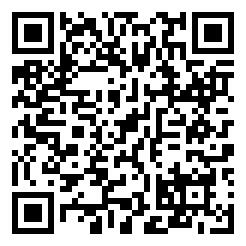我們的服務(wù)符合學(xué)術(shù)規(guī)范和道德
專業(yè) 高端讓您使用時沒有后顧之憂
我們的服務(wù)符合學(xué)術(shù)規(guī)范和道德
專業(yè) 高端讓您使用時沒有后顧之憂
 投稿咨詢
投稿咨詢
《磨損雜志》致力于提高有關(guān)材料磨損性質(zhì)的基礎(chǔ)和應(yīng)用知識。從廣義上講,感興趣的主題包括從對磨損機(jī)理的基本理解發(fā)展到對實際工程問題的創(chuàng)新解決方案。邀請?zhí)峤坏闹黝}包括:(a)磨損建模和驗證。這包括基本機(jī)制的建模以及摩擦系統(tǒng)的建模。在模型開發(fā)過程中,方法可能采用接觸力學(xué)、摩擦考慮和潤滑概念,并且始終包括模型的物理驗證。(b)制定和使用新的磨損試驗方法和標(biāo)準(zhǔn)。這包括其開發(fā)背后的基本原理(包括對現(xiàn)有測試方法的批評,如果合適的話)。(c)新的磨損診斷工具。應(yīng)說明這些工具的需求以及它們在基礎(chǔ)研究或工程中的應(yīng)用實例。(d)耐磨材料、涂層或表面處理的發(fā)展。例如,此類論文應(yīng)包括針對目標(biāo)工程應(yīng)用中當(dāng)前使用的材料進(jìn)行基準(zhǔn)測試,或提出一個基本假設(shè),該假設(shè)可作為當(dāng)前最先進(jìn)技術(shù)的進(jìn)步進(jìn)行驗證。選擇所采用的試驗方法(以及進(jìn)行這些試驗的條件)所采用的標(biāo)準(zhǔn)必須在目標(biāo)工程應(yīng)用方面具有充分的合理性。建議的磨損機(jī)制必須在支持這些結(jié)論的數(shù)據(jù)和觀察的背景下進(jìn)行討論。(e)材料的成分、結(jié)構(gòu)、性能和加工與其磨損性能之間的關(guān)系。這樣的提交應(yīng)該包括工作的基本原理,它在先前知識中的基礎(chǔ),以及如何實施當(dāng)前的方法來探索這些關(guān)系。選擇所用試驗或分析方法的標(biāo)準(zhǔn)應(yīng)解釋為研究的目的,無論是基本的還是應(yīng)用的。(f)潤滑劑或其他界面物質(zhì)在材料磨損中的作用。這些提交的報告將集中在界面環(huán)境特征良好的情況下的磨損機(jī)制。所有提交材料的摘要,無論是一篇完整的論文還是簡短的交流,都應(yīng)該總結(jié)出針對給定問題的目的和方法,指出正在調(diào)查的材料,并以簡潔明了的方式提出初步結(jié)論。公開的商業(yè)化或產(chǎn)品推廣是不可接受的。將對提交的服裝進(jìn)行同行評審,以評估其檔案質(zhì)量、溝通的清晰度以及對服裝科學(xué)和技術(shù)貢獻(xiàn)的新穎性。
Wear journal is dedicated to the advancement of basic and applied knowledge concerning the nature of wear of materials. Broadly, topics of interest range from development of fundamental understanding of the mechanisms of wear to innovative solutions to practical engineering problems.Submissions are invited on such subjects as:(a)Wear modelling and validation. This includes modelling of fundamental mechanisms as well as the modelling of tribosystems. Approaches may employ contact mechanics, frictional considerations and lubrication concepts in the development of the model, and will always include physical validation of the model.(b)The development and use of new wear testing methods and standards. This includes the rationale behind their development (including a critique of existing test methodologies where appropriate).(c)New wear diagnostic tools. The need for these tools and examples of their use in either basic research or engineering should be illustrated.(d)The development of wear-resistant materials, coatings, or surface treatments. Such papers should include, for example, benchmarking against materials currently employed in targeted engineering applications, or presenting a basic hypothesis underlying the work that can be validated as an advance over the current state-of-the-art. The criteria used to select the test methods employed (and the conditions under which those tests were conducted) must be robustly justified with regard to the targeted engineering applications. The proposed mechanisms of wear must be discussed in the context of data and observations that support those conclusions.(e)Relationships between the composition, structure, properties, and processing of materials and their wear behavior. Such submissions should include the basic rationale for the work, its foundation in prior knowledge, and how the current approach is implemented to explore these relationships. The criteria used to select the tests or analytical methods employed shall be explained with respect to the purpose of the research, be it fundamental or applied.(f)The role of lubricants or other interfacial species in the wear of materials. Such submissions will focus on the mechanisms of wear in the presence of well-characterized interfacial environments.The Abstracts of all submissions, whether a full paper or a shorter communication, should summarize the purpose and approach to the given problem, indicate the materials under investigation, and present the primary conclusions in a brief and concise manner. Overt commercialism or product promotion is unacceptable. Submissions to Wear will be peer-reviewed to assess their archival quality, clarity of communication, and the novelty of their contributions to the science and technology of wear.
| 大類學(xué)科 | 分區(qū) | 小類學(xué)科 | 分區(qū) | Top期刊 | 綜述期刊 |
| 工程技術(shù) | 2區(qū) | ENGINEERING, MECHANICAL 工程:機(jī)械 MATERIALS SCIENCE, MULTIDISCIPLINARY 材料科學(xué):綜合 | 2區(qū) 2區(qū) | 是 | 否 |
| JCR分區(qū)等級 | JCR所屬學(xué)科 | 分區(qū) | 影響因子 |
| Q1 | ENGINEERING, MECHANICAL | Q1 | 4.695 |
| MATERIALS SCIENCE, MULTIDISCIPLINARY | Q2 |
* 請認(rèn)真填寫需求信息,學(xué)術(shù)顧問24小時內(nèi)與您取得聯(lián)系。